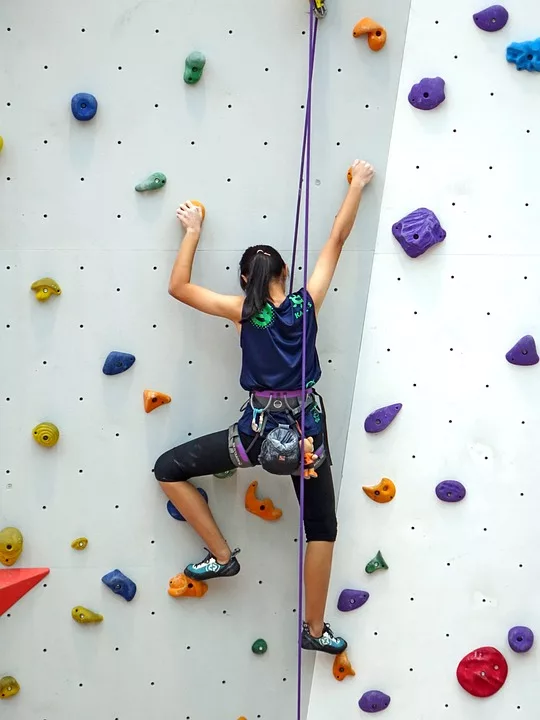Exploring the Thrills of Indoor Climbing: A Beginner’s Guide
Introduction:
Indoor climbing, also known as indoor rock climbing or wall climbing, has emerged as a popular activity for adventure enthusiasts in recent years. Offering a safe and controlled environment, indoor climbing walls have become a hub for climbers of all levels, from beginners to experts. Whether you are a complete novice or have some outdoor climbing experience, this beginner’s guide will provide you with all the necessary information to embark on your indoor climbing journey.
1. Understanding Indoor Climbing:
Indoor climbing is a sport that involves climbing artificial walls equipped with climbing holds and grips. These walls are constructed with sturdy materials and designed to replicate the challenges and excitement of outdoor rock formations. The climbing holds are strategically placed to provide climbers with various routes and difficulty levels, catering to individuals of all skill levels.
2. Safety First:
Prior to engaging in indoor climbing, it is essential to prioritize safety. Whichever climbing gym or facility you choose, ensure that it maintains strict safety protocols, including trained staff, proper equipment, and regular inspections. Additionally, familiarize yourself with the gym’s safety guidelines, such as the correct way to wear a harness, tying knots, and proper belay techniques. Following these safety measures will help you enjoy your climbing experience while minimizing the risk of accidents.
3. Essential Gear:
To indulge in indoor climbing, you will need some essential gear. The most crucial piece of equipment is a climbing harness. A harness fits around your waist and legs, providing a secure attachment point for the rope. Climbing shoes with sticky rubber soles are also vital for improved grip and precision. Additionally, chalk bags, used to keep your hands dry, and a belay device for rope management are recommended. While most climbing gyms provide rental gear or offer packages for beginners, investing in your own gear once you develop a passion for climbing is advisable.
4. Getting Started: Bouldering vs. Top-Roping:
Indoor climbing can be classified into two primary categories: bouldering and top-roping. Bouldering involves climbing shorter walls without the use of ropes, typically ranging from 10 to 15 feet. This discipline focuses on technical skill, balance, and problem-solving. On the other hand, top-roping allows climbers to ascend higher walls with the support of a rope anchored to the top. This form of climbing emphasizes endurance, strength, and mental focus. Starting with bouldering is often recommended for beginners to develop technique and gain confidence before progressing to top-roping.
5. Climbing Techniques and Etiquette:
Mastering climbing techniques is essential for a smooth and enjoyable climbing experience. Learning proper footwork, handholds, body positioning, and efficient movement will enhance your climbing skills. When climbing with others, it is crucial to practice good etiquette, such as waiting your turn, communicating effectively, and respecting others’ routes or projects. Being mindful of your surroundings and maintaining a positive atmosphere contributes to a welcoming climbing community.
6. Training and Progression:
As you become more comfortable with indoor climbing, you may want to challenge yourself and improve your skills. Climbing gyms often offer training programs, workshops, and clinics tailored to climbers at various levels. These sessions focus on developing strength, endurance, specific techniques, and mental resilience. Additionally, climbing with more experienced climbers or joining a climbing club can expose you to advanced techniques and provide valuable mentorship.
7. Benefits Beyond the Climbing Wall:
Aside from the thrill of scaling heights and overcoming challenges, indoor climbing offers numerous benefits. It is a full-body workout that engages muscles across your body, improving your strength, flexibility, and overall fitness. Climbing also promotes problem-solving, decision-making, and mental resilience as you analyze routes and make split-second decisions. Moreover, the supportive climbing community fosters friendships, teamwork, and a sense of belonging.
Conclusion:
Indoor climbing provides an exhilarating and accessible pathway into the world of rock climbing. Whether you are looking for a new way to stay fit or seeking adventure, indoor climbing offers endless possibilities for exploration and growth. By understanding the basics, prioritizing safety, and embracing the challenges, you can embark on an exciting journey into the vertical world of indoor climbing. So gear up and start climbing – the thrills await you!





Leave a Reply